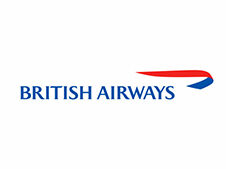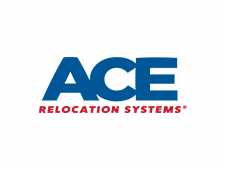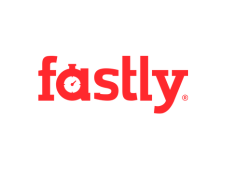White Paper:Turning the cost of Employee Food Program into an investment in health, wellness, engagement and productivity – By Simon Elliot
For many years employers have provided employee food programs but has the tide changed to look at this cost in a different light and develop a platform of investment that ultimately contributes to your top and bottom line performance? Freethinking organizations are looking at the investment in just this way.
History of food service
From the middle ages nobles and royalty employed the services of cooks to provide food for large numbers of servants, armies and guests for special occasions and in the early 1300’s the first cooks guild was established to protect the cooks secrets.
Famous armies over the centuries understood the need for food and catered for soldiers, non-commissioned officers and officers in separate ‘messes’ and the famous line ‘an army marches on its stomach’ was born; the same can be said in the world of business and commerce.
The industrial revolution brought the concept of ‘company towns’ where the employer would invest in food , facilities and services to bring convenience to the workforce and give them no reason to leave, thus maximizing employee time of campus and improving productivity.
In the 1960’s and 1970’s the staff restaurant evolved and hierarchical dining continued with Blue Collar, White Collar and Executive dining rooms.
In the 1980’s and 1990’s several initiatives were adopted to reduce the cost of these services such as vending, reduction or elimination of the service and removal of subsidies.
What we see today is a 180 degree shift and the commonly accepted principle that the money spent on an effective program is an investment, not a cost.
It is estimated that for a business with a food program, for each employee that participates, he or she will save 14 minutes a day in productivity, that’s over 55 hours a year per employee! For a business with 1,000 employees at an hourly rate of just $20 per hour, that’s $1.1M!!
Food service today
According to the Food Service Distributors Association there are 1.9 Million food establishments in the US and about one third of those in the food service sector; Hospitals, Correctional Facilities, Schools, Government & Military, Retirement Residences and in Business & Industry.
In Business & Industry, food service providers have really raised the bar and many employ Executive Chefs with the talent and flair to produce very high quality of menus to rival some high end, high street restaurants.
Consumer pressure has forced these providers to be more focused on the supply chain, using local producers, fresh ingredients, often organic and avoiding additives and unhealthy foods.
The industry has embraced its responsibility to health in feeding the American workforce and reversing the decline in negative health effects of unhealthy eating.
Health & Wellness
Beyond this evolution, some food service providers have proactively taken the lead and go far beyond the passive introduction of healthier meals and drive health and wellness in the workplace.
Through selection of healthy ingredients, development of healthy recipes and menus and utilizing such initiatives as ‘Stealth Health’ – whereby recipes are engineered by development chefs and dieticians to not only protect the integrity of the dish but reduce such things as salt and fat, introduce vegetables and healthier alternatives to traditional ingredients and carefully manage the calorie counts and portions sizes.
The benefits of a healthier workforce are significant and beyond reducing the societal life time health costs can reduce absenteeism and sickness by 26.8%, healthcare costs reduced by 26.1% and an average 32% reduction in workers compensation and disability management claim costs.
An effective health and wellness program can deliver a return on investment of $5.81 for every $1 invested.
Societal costs of health
Beyond simply the health of the workforce, there is a bigger responsibility and societal benefit to promote and deliver healthier eating practices in food service operations through school, workplace and in retirement.
• 70% of all deaths in the US are attributable to chronic disease.
• The costs of chronic diseases make up more than 75% of the $2 trillion healthcare costs in the US.
• More than six in ten American adults (63.1%) were either overweight (36.6%) or obese (26.5%) in 2009.
• Productivity losses related to personal and family health problems cost US employers $1,685 per employee a year, or $225.8 billion annually.
• Between 2008 and 2009, premiums for employer-based health insurance increased an average of 5% for families, bringing the total premium for individual coverage to $4,824 and family coverage to $13,375.
For a business with 1,000 employees and a 10% improvement in productivity and 10% reduction in healthcare costs, the benefit of an effective program would be over $ 2 million each year.
The long term benefit on societal costs of health for the same 1,000 employees and their families would save many tens of millions.
Creating an Employee Engagement Program, beyond food
Some organizations see the benefits of going far beyond food and in understanding the pressures on their employees to gain a balance across the four states of modern life; home, family, work and play.
These organizations recognize that if they deliver convenience to their employees and reduce the stress in all of these four areas, ultimately they will have a happier, healthier, less stressed and more productive workforce.
More and more organizations are developing programs that include such features as:
• Convenience store • Laundry & dry cleaning • Car valeting
• Social commuting • Employee transportation • Employee Concierge
• Grocery drop off • Postal services • Hairdressing
The adoption of technology, social media, online ordering and prepay add to creating a more convenient and synergized workplace.
Employee Engagement
A fully engaged workforce is likely to be two and half times more productive than a workforce that is not. In a study by Towers Perrin of 50 global companies, those with highly engaged employees increased operating income 19% and earnings per share almost 28% over one year, while companies with low employee engagement levels showed declines of 32% in operating income and 11% in earnings per share.
But how do you get employee engagement through a food program?
Creating a workplace community
Food has been at the center of community, collaboration and connection since the beginning of society and what better platform than to build the workplace community as a means to drive employee engagement.
The modern workplace restaurant or café can be more than just a place in which to eat. For some organizations it’s a place to be inspired, invigorated, to meet, collaborate and come up with ‘the next big idea’.
In these forward thinking businesses, beyond food, games, comfortable seating and dining areas, employees can play table tennis, crazy golf, attend a ‘Boot Camp’, Yoga or Pilates class, shop from local community guest retailers and socialize at internal and external networking events.
Employee Retention (The War on Talent)
Attracting and retaining the best people is becoming more and more of a challenge for America’s top companies. The cost of staff turnover is often hidden as the ability to quantify what losing your most talented people to the competition means is almost impossible.
For the average company, turnover costs more than 12% of pre-tax income and for those at the high end, those costs can reach almost 40% of earnings. 10
Organizations have proven that they can become the best without necessarily compensating the best in their industry through providing a comprehensive employee engagement and retention program, of which food often forms the basis.
Connecting the Community
Organizations and their workforce are often inextricably linked to the communities in which they site themselves and operate. The connection between the three can be very powerful and once made are often far reaching and built to last.
The food and restaurant program can be utilized to be the hub of building this community and can include such things as connecting with family, people, organizations and favored charities and causes;
• Family Days • Connect with Seniors • Community Gardens
• Community Days • Educational Days • Local Chambers
• School Visits • Cooking Classes • Social Events
The bonds that can be created through the employee, family, internal and external communities often prove very strong, powerful and engaging, creating a sense of loyalty and commitment from all stakeholders which ultimately contributes to productivity, top and bottom line growth.
Summary
The opportunity is to change the outlook to a different perspective and through effective MEASUREMENT of such indicators as; absenteeism, healthcare costs, staff turnover, productivity, top line revenue and bottom line growth, organizations can really begin to understand the justified investment into these programs, create long term employee loyalty, increase revenues, productivity and profit.
About the author:
Simon Elliot has been in the food and facilities management industry for 20 plus years in the UK, Europe, Australia, Central and North America providing solutions to Clients in both Public and Private Sector businesses from car manufacturing plants to high tech, from financial services to call centers and from life sciences to remote site locations.
Simon is now responsible for business development in Western US; Northern California, Washington and Oregon for ARAMARK Business Dining and LifeWorks Restaurant Group.
To contact the author, email at
Elliot-simon@aramark.com












































